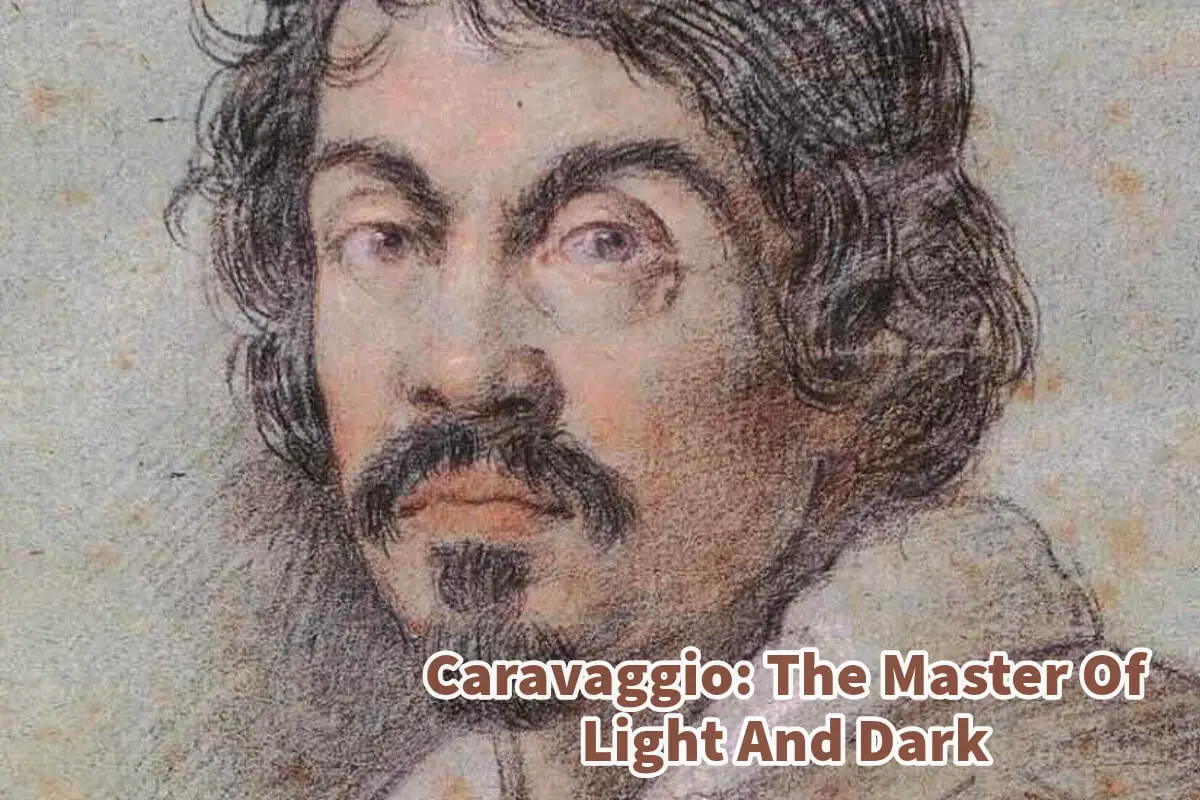Michelangelo Merisi da Caravaggio, known simply as Caravaggio, is one of the most renowned and fascinating painters of the Baroque era. He is mainly celebrated for his masterful use of light and dark, a technique known as chiaroscuro.
Caravaggio’s innovative approach to chiaroscuro revolutionized the art world, creating dramatic contrasts that brought his subjects to life with unprecedented realism and emotional depth. Caravaggio’s pioneering use of chiaroscuro distinguished his work and left a profound and lasting impact on future generations of artists. His ability to manipulate light and shadow with such precision and effect earned him the reputation of a true master, influencing countless artists and shaping the course of art history.
Table of Contents
- Caravaggio: The Genius Behind Light And Shadow
- Caravaggio: Master of Chiaroscuro
- Major Art Works And Themes From Caravaggio
- Caravaggio’s Lasting Impact And Legacy
- Related Questions
Caravaggio: The Genius Behind Light And Shadow
Michelangelo Merisi da Caravaggio, known simply as Caravaggio, is one of the most renowned painters of the Baroque era. He was born in Milan in 1571 and was active in Rome, Naples, Malta, and Sicily until he died in 1610.
Caravaggio’s works are celebrated for their dramatic use of light and shadow, intense realism, and powerful emotional content. This blog post delves into Caravaggio’s life and unique artistic style and provides an overview of his most significant paintings.

Early Life And Influences
Caravaggio was born into a world of artistic innovation and upheaval. His father, Fermo Merisi, was a steward and architect-decorator for the influential Sforza and Colonna families, which exposed Caravaggio to art and architecture early on.
After a tumultuous childhood marked by the loss of his parents to the plague or disease, Caravaggio moved to Milan to apprentice under the painter Simone Peterzano, who claimed to be a pupil of Titian.
This period was crucial in developing Caravaggio’s skills and exposing him to the works of the Lombard painters, who emphasized naturalism and attention to detail.
Artistic Style And Techniques
Caravaggio’s style broke away from the idealized representations of the High Renaissance, embracing a more naturalistic approach. He is most famous for using chiaroscuro—a technique involving stark contrasts between light and dark to create a sense of volume and three-dimensionality.
This method not only enhanced the dramatic effect of his paintings but also focused the viewer’s attention on the most essential elements of the composition.
Caravaggio: Master of Chiaroscuro
We can not talk about the artist Caravaggio without mentioning his use of the artistic technique known as Chiaroscuro.
Defining Chiaroscuro
Chiaroscuro is an artistic technique that uses strong contrasts between light and dark to achieve a sense of volume and three-dimensionality in a two-dimensional medium.
The term comes from the Italian words “chiaro” (light) and “scuro” (dark). This technique is crucial in creating a dramatic effect and highlighting the emotional intensity of the subject matter.
The Importance Of Chiaroscuro
Chiaroscuro is significant for several reasons:
Depth And Realism:
By manipulating light and shadow, artists can create the illusion of depth and solidity in their work. This adds a lifelike quality to the figures and objects depicted, making them appear more three-dimensional and tangible.
Focus And Emphasis:
Chiaroscuro helps direct the viewer’s attention to the most essential elements of a composition. By illuminating particular parts of the painting, while casting others in shadow, artists can guide the viewer’s eye and emphasize critical aspects of the scene.
Emotional Impact:
The interplay of light and dark can heighten the emotional intensity of a painting. Dramatic lighting can evoke a range of emotions, from fear and tension to serenity and contemplation, depending on how it is applied.
Narrative Enhancement:
Chiaroscuro can be used to enhance the storytelling aspect of a painting. By strategically placing light and shadow, artists can create a sense of mood and atmosphere that complements the narrative.
Caravaggio’s Mastery Of Chiaroscuro
Caravaggio is widely regarded as the master of chiaroscuro. His innovative use of this technique revolutionized the art world and left a lasting impact on future generations of artists.
Caravaggio’s subjects often included religious scenes, still lifes, and genre paintings. His ability to depict human emotion with raw intensity was unparalleled, making his work profoundly impactful, and his use of Chiaroscuro helped emphasize this impact. Unlike many of his contemporaries, Caravaggio painted directly from life, using ordinary people as models for his religious figures, adding to his works’ realism and relatability.
Major Art Works And Themes From Caravaggio
Caravaggio’s oeuvre includes several masterpieces that have left an indelible mark on the art world. Below are some of his most significant paintings:
The Calling of Saint Matthew (1599-1600)
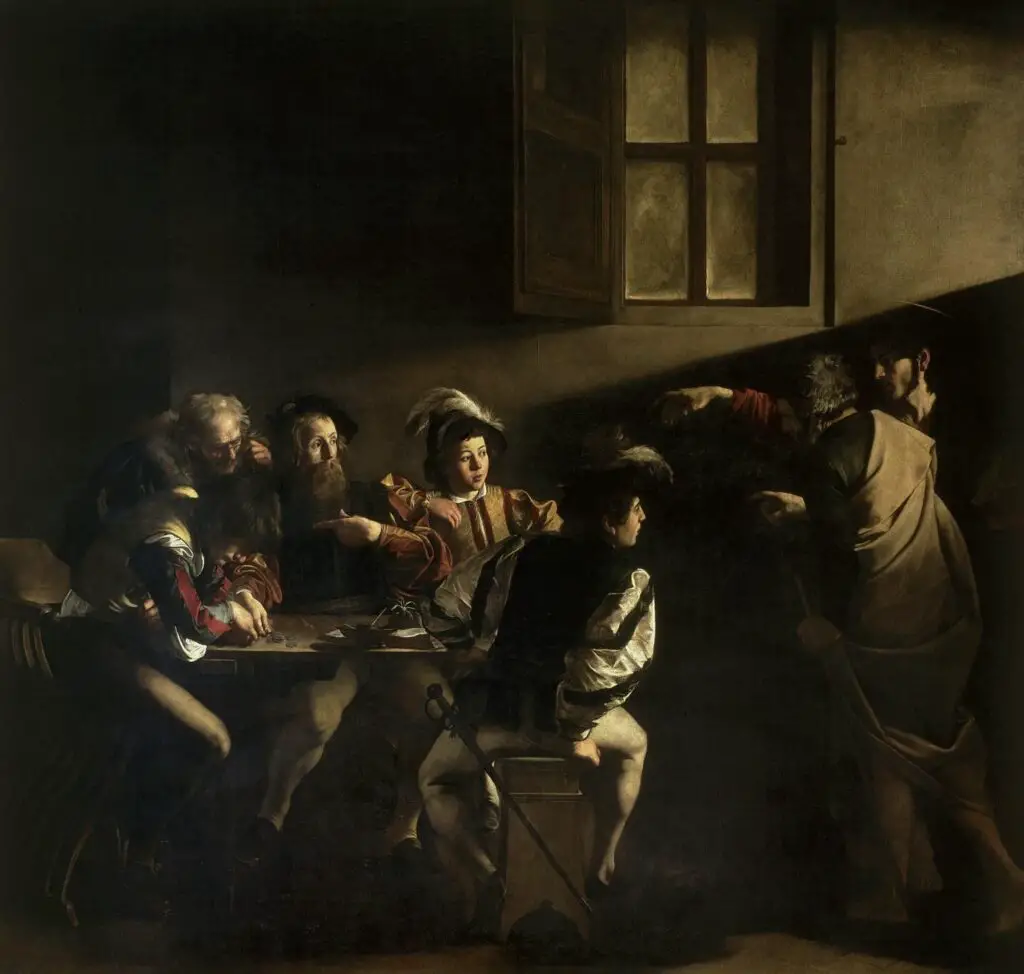
This painting is a prime example of Caravaggio’s mastery of chiaroscuro. It depicts the moment Jesus Christ inspires Matthew to follow him. The play of light and shadow, the realistic depiction of the characters, and the dramatic intensity make this one of Caravaggio’s most celebrated works.
Judith Beheading Holofernes (1598-1599)
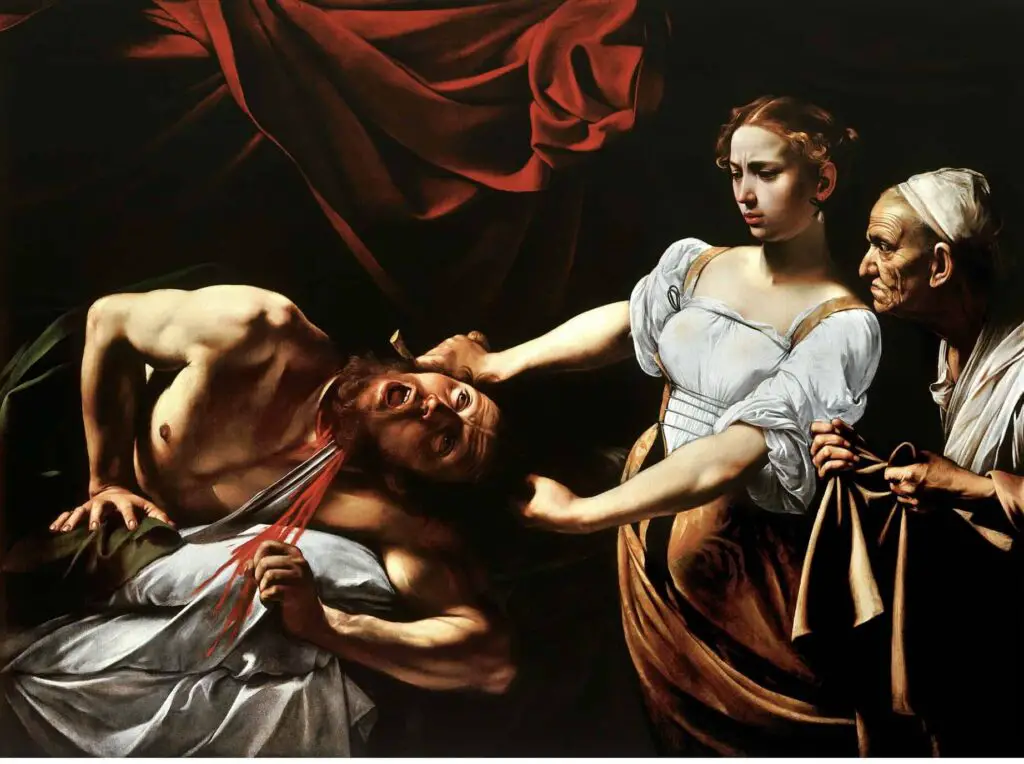
This work captures the biblical story of Judith, who beheads the Assyrian general Holofernes. The painting is noted for its graphic realism and emotional intensity, showcasing Caravaggio’s skill in depicting dramatic moments.
Supper at Emmaus (1601)

In this painting, Caravaggio captures the moment the resurrected Christ reveals himself to two of his disciples. The use of light to highlight the central figures and the realistic depiction of the scene make this a standout piece in Caravaggio’s portfolio.
The Conversion of Saint Paul (1600-1601)
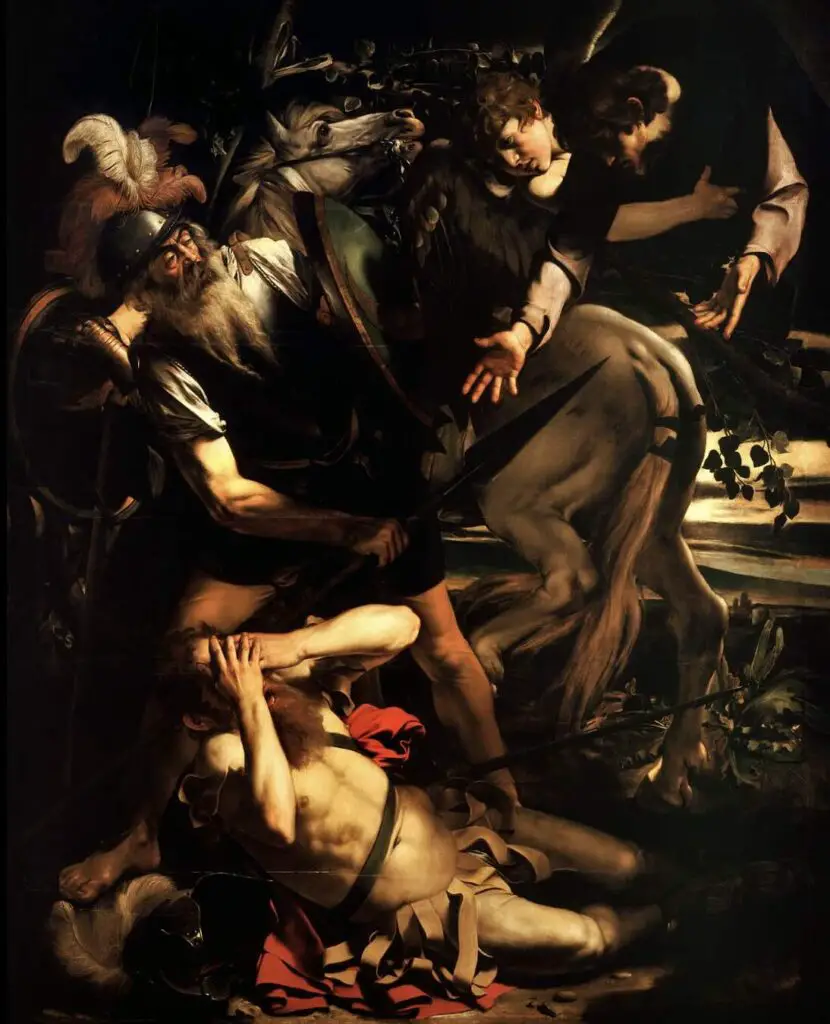
This painting depicts Saul’s conversion to Christianity on the road to Damascus. Caravaggio’s use of light to symbolize divine intervention and the intense expression on Saul’s face convey the transformative power of the event.
David with the Head of Goliath (1610)

One of Caravaggio’s later works, this painting is notable for its reflective and somewhat melancholy tone. It is believed that Caravaggio painted his face on the severed head of Goliath, possibly reflecting his feelings of guilt and remorse.
Caravaggio’s Lasting Impact And Legacy
Caravaggio’s innovative techniques and unflinching realism profoundly impacted the art world. His dramatic use of light and shadow influenced a generation of artists, the Caravaggisti, who sought to emulate his style. His work also paved the way for the Baroque movement, characterized by emotional intensity, movement, and dramatic use of light.
Caravaggio’s life was marked by tumult and controversy despite his artistic success. Known for his fiery temper and brawls, he lived a life as dramatic as his paintings. His untimely death at the age of 38 under mysterious circumstances only added to his legend.

Caravaggio’s legacy as a master of light and shadow and an innovator who brought a new level of realism and emotional depth to painting is undeniable. His works continue to captivate audiences with their powerful depictions of human emotion and dramatic intensity.
Caravaggio produced over 100 works of art during his lifetime, each painting, sketch, or other work contributing to the enduring fascination with his life and art. What is unique is that even today, new paintings and works of art are being discovered.
Whether you are an art historian, a casual admirer, or someone encountering his work for the first time, Caravaggio’s paintings offer a profound and moving experience that continues to resonate across the centuries.
Listen To Our Podcast About
Is Caravaggio the True Master of Light and Dark?
Below or By clicking here.
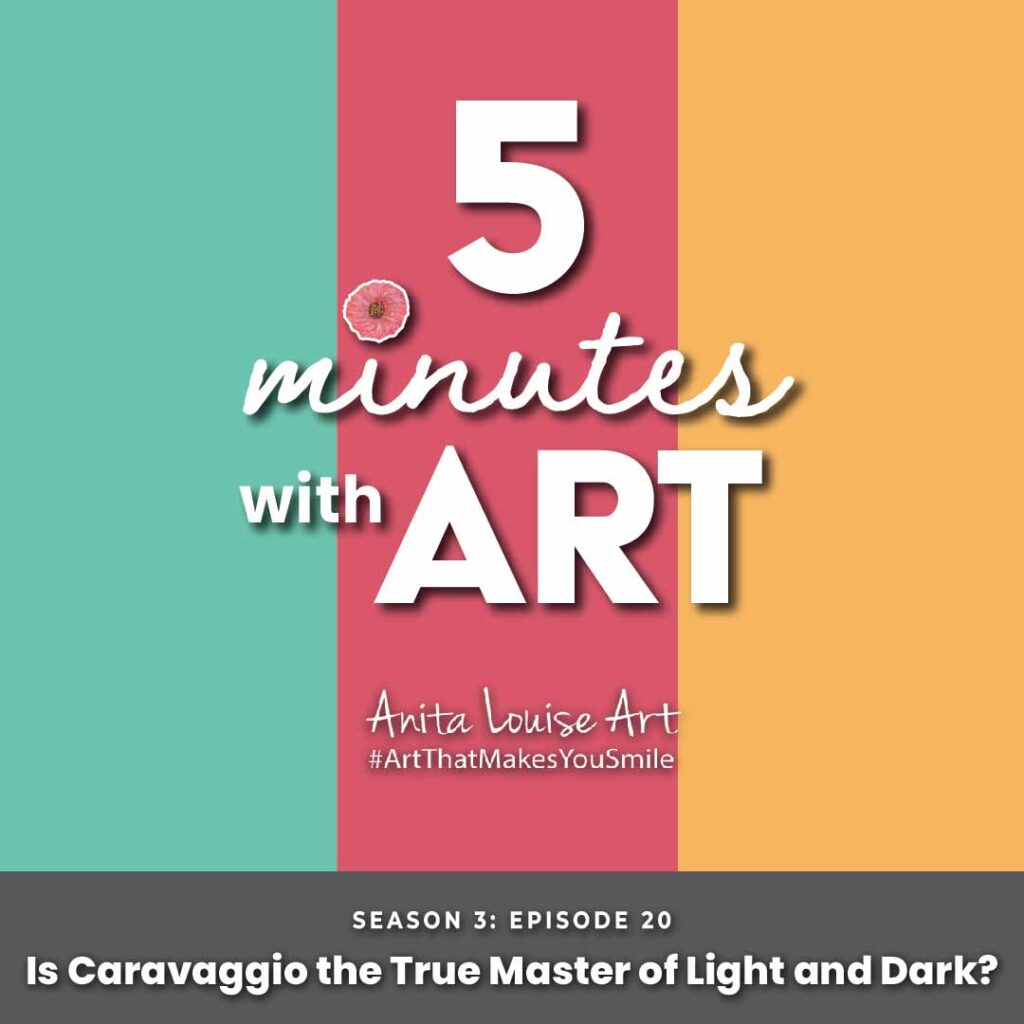
Anita Louise Art is dedicated to art education, great artists, and inspiring others to find and create their art. We love art that uplifts and inspires. #ArtToMakeYouSmile! #ArtToMakeYouHappy!
If you are interested to see any of my art, you can find out more by clicking here. If you are interested in what inspires me and my paintings, you can discover more by clicking here.
We have a free newsletter and would love you to be part of our community; you can subscribe to the newsletter by clicking here. I would be happy to talk to you if you have any questions. You can reach me, Anita, by clicking here.
Subscribe to our Anita Louise Art YouTube Channel with great videos and information by clicking here.
Join us for our podcast “5 Minutes With Art.” Spend just 5 minutes a week with us to discover and learn about great art and artists. You can find out more about our podcast by clicking here.
Related Questions
Leonardo da Vinci’s Death And Legacy Of His Genius
Leonardo da Vinci has always held a special place in my heart as an artist, embodying what it truly means to be a genius in art. His impact is so profound that it continues to shape our perception of art today.
By clicking here, you can learn more by reading Leonardo da Vinci’s Death And Legacy Of His Genius.
Why I Love The Dutch Artist Vincent Van Gogh
There are many reasons why Vincnet Van Gogh continues to inspire me. Among those is his use of brustrokes, how he used colors and color combinations and also showed us the importance of showing raw emotion in art. All of these and other things help to continues to make Vincent Van Gogh one of the most significant artists who ever lived.
By clicking here, you can discover more by reading Why I Love The Dutch Artist Vincent Van Gogh.
Art Of Michelangelo, His Art And Legacy Explored
Michelangelo, a luminary of the Renaissance, has left an indelible mark on the world of art with his iconic creations. His influence persists, and is often cited as one of the most significant artists ever.
By clicking here, you can learn more by reading Art Of Michelangelo, His Art And Legacy Explored.

